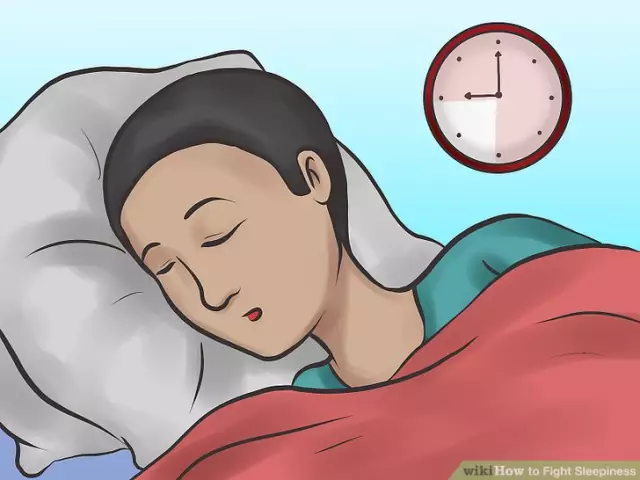- Author Rachel Wainwright [email protected].
- Public 2023-12-15 07:39.
- Last modified 2025-11-02 20:14.
6 types of obesity and how to fight each of them
Everyone knows that over the years the figure of a person does not change for the better. In order to preserve youthful harmony and fit in adulthood, good heredity and self-discipline are required, which allows you to constantly monitor eating behavior and physical activity.

Source: depositphotos.com
Unfortunately, only a few manage to achieve this effect. The lot of the majority is to sadly observe the process of accumulating body fat and try to stop it. However, this task also sometimes turns out to be insoluble: the result appears, but it is clearly disproportionate to the effort expended. A similar situation may arise due to the fact that a person does not act purposefully enough. After all, obesity develops according to a certain type, and each of the types has its own cause and requires specific methods of struggle.
We will acquaint readers with different aspects of this problem.
Overeating obesity
The most common type of obesity in the world. If your upper body volume increases evenly (your belly grows, fat deposits appear on the lower part of the cheeks and the back of your head, your chest and arms become larger) - this is a consequence of overeating. An interesting point: people with this type of obesity usually claim to eat very little. Unfortunately, just food restrictions rarely give the expected result: overeating obesity is associated not so much with the amount of food consumed, but with an imbalance between the calories ingested and consumed.
The fight against obesity overeating should include the following techniques:
- minimizing the consumption of fast carbohydrates. First of all, you need to stop putting sugar in tea and coffee. With these drinks, we get a fairly decent portion of pure glucose per day, which, in the absence of sufficient physical exertion, almost completely passes into subcutaneous fat. If your coffee doesn't taste good without sugar, you can add cinnamon, vanilla, or some low-fat milk to it. Tea can be flavored with pieces of fruit or berries. It is important that the supplements are natural. Factory-made fruit teas are much less useful - the flavors that make up most of these products are just synthetic flavors;
- decrease in the working volume of the stomach. A person who is constantly transmitting becomes accustomed to consuming large portions with each meal. To feel full and not eat too much, it is worth drinking 1-1.5 glasses of clean water 30 minutes before meals. Then the digestion process is facilitated and the portions can be gradually reduced;
- increased physical activity. If you are prone to overeating obesity, it is very important to burn most of the calories you receive. You should not justify a sedentary lifestyle by saying that there is no time to visit the gym. It is enough to walk part of the way to and from work and actively do household chores every day, for example, cleaning the apartment. It is an effective replacement for exercising on simulators.
"Nervous" belly
An increase in volume exclusively in the abdominal area indicates stress. People prone to this type of obesity usually calm themselves down with sweets or have a habit of gnawing something like seeds, crackers, chips to distract themselves from heavy thoughts.
The problem can be solved in two ways. Firstly, you have to control yourself and not buy a cake every time your mood has soured. Secondly, you should reconsider your attitude towards life and learn to take troubles more calmly. If you don't have the strength to cope with this on your own, it makes sense to talk to a psychologist. It is possible that many of your problems are not at all a disaster and you can completely abstract from them. In addition, it is useful to find some kind of hobby for yourself (for example, playing sports, going to the bathhouse, handicrafts). This will help to distract from the routine course of life, find like-minded people and increase self-esteem, and as a result, it will be easier to endure life's troubles.
Gluten obesity
Excess deposits exclusively in the thigh area are likely to occur against a background of hormonal imbalance. This change in body shape is called gluten obesity and is common in postmenopausal women.
This kind of problem usually requires the intervention of an endocrinologist. You need to see a doctor who will help normalize your metabolism. It is important to give up bad habits and increase physical activity, otherwise the efforts of doctors may be useless.
Atherogenic metabolic imbalance
With this type of obesity, excess weight accumulates in the abdominal cavity (the girth of the upper abdomen and the area under the breast increases). A person who gains weight due to an atherogenic metabolic imbalance usually has shortness of breath and dizziness caused by hypoxia. Difficulty bending over and squatting. There is a deterioration in the quality of sleep due to insufficient ventilation of the lungs.
This situation is not only unpleasant but also dangerous. The problem requires an integrated approach: an urgent need to quit smoking and alcohol, increase physical activity and reduce the proportion of animal food in the diet, giving preference to vegetables and fruits. It makes sense to undergo a medical examination for the detection of type 2 diabetes mellitus and hypertension.
Obesity of the venous canals
This type of obesity has hereditary causes. Mostly women suffer, especially during hormonal changes (during pregnancy or during menopause). Pathology is manifested by heaviness in the legs, frequent edema and accumulation of fat in the calves and lower legs.
The main way to solve the problem is to organize the right physical activity. For a woman suffering from obesity of the venous canals, exercising on simulators, primarily associated with lifting weights, can be dangerous. The best options are walking, skiing, swimming, climbing stairs and cycling, that is, the types of loads that prevent the stagnation of fluid in the lower body and maintain optimal muscle tone. Of course, all lessons must be approved by a doctor and must be supervised by an experienced instructor.
Inactivity obesity
This type of obesity is typical for people who have sharply decreased their usual physical activity (for example, for athletes who have ended their sports career). The disorder is manifested by the accumulation of powerful fat deposits in the waist and mid-abdomen. In such a situation, it is necessary to change the diet: fasting and overeating equally aggravate the problem. It is important to eat small and frequent, giving preference to plant-based foods and minimizing the proportion of refined carbohydrates as much as possible.
Age-related changes in the figure in most cases can be corrected. You just need to remember that you cannot use radical diets, which in youth helped to get rid of extra pounds in a couple of days. In this case, you need to understand the specific reasons for the appearance of body fat and correct them correctly.
YouTube video related to the article:

Maria Kulkes Medical journalist About the author
Education: First Moscow State Medical University named after I. M. Sechenov, specialty "General Medicine".
Found a mistake in the text? Select it and press Ctrl + Enter.






